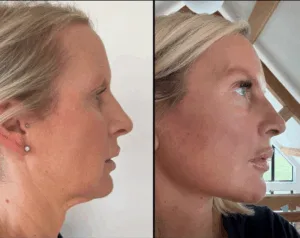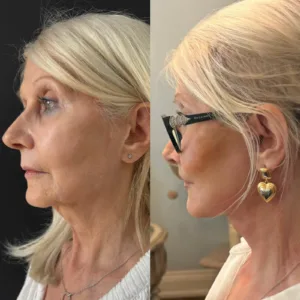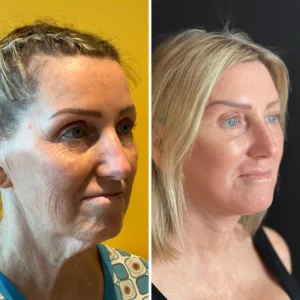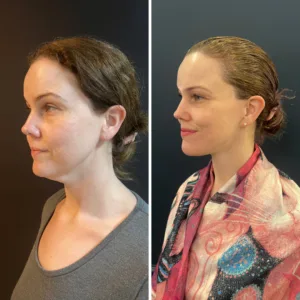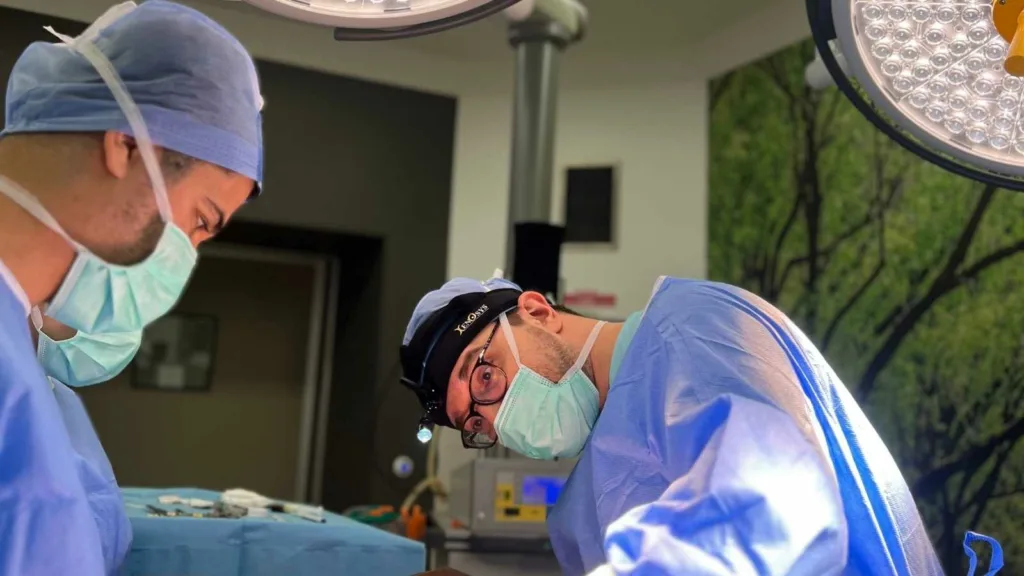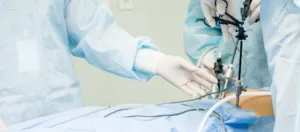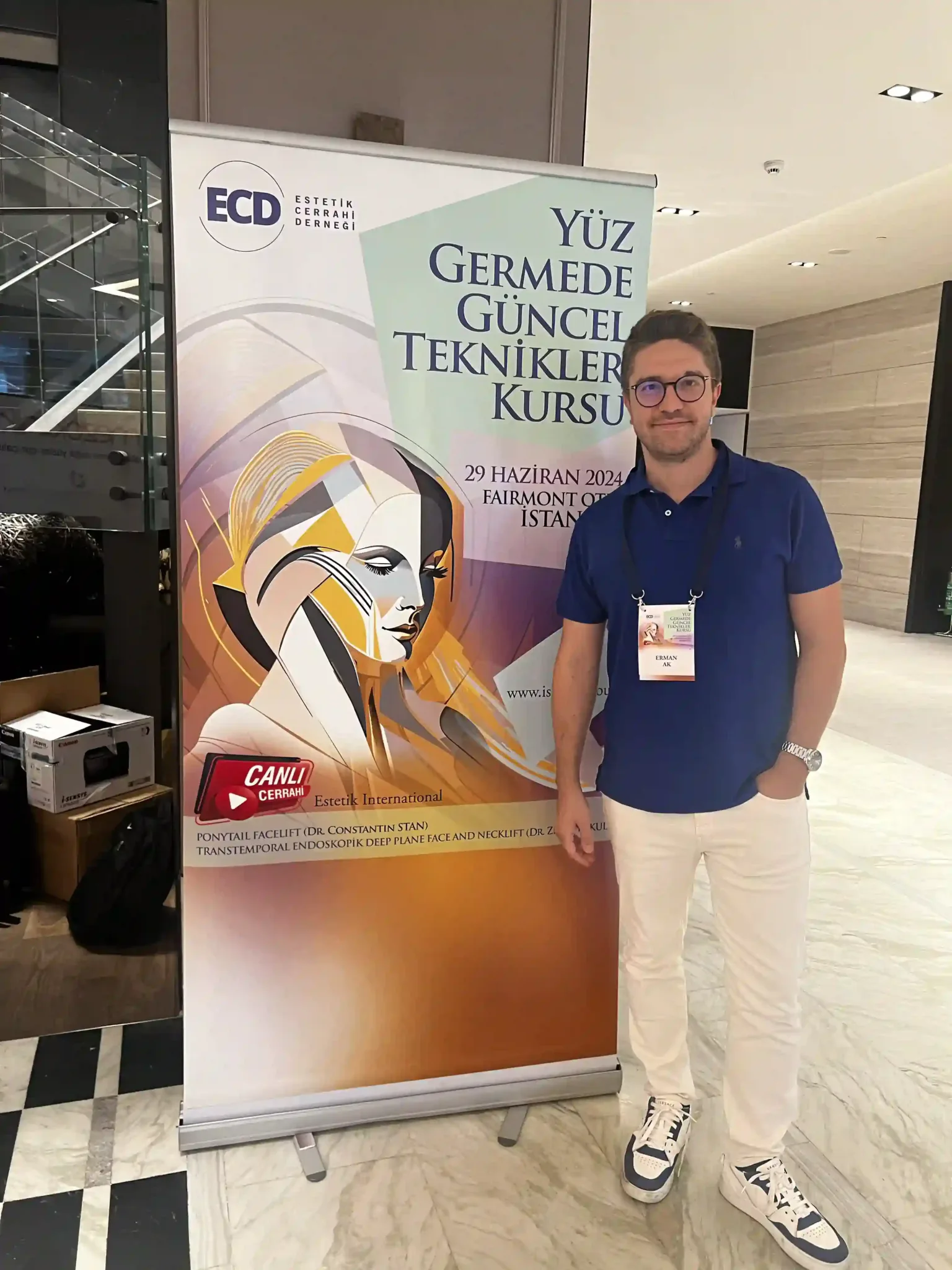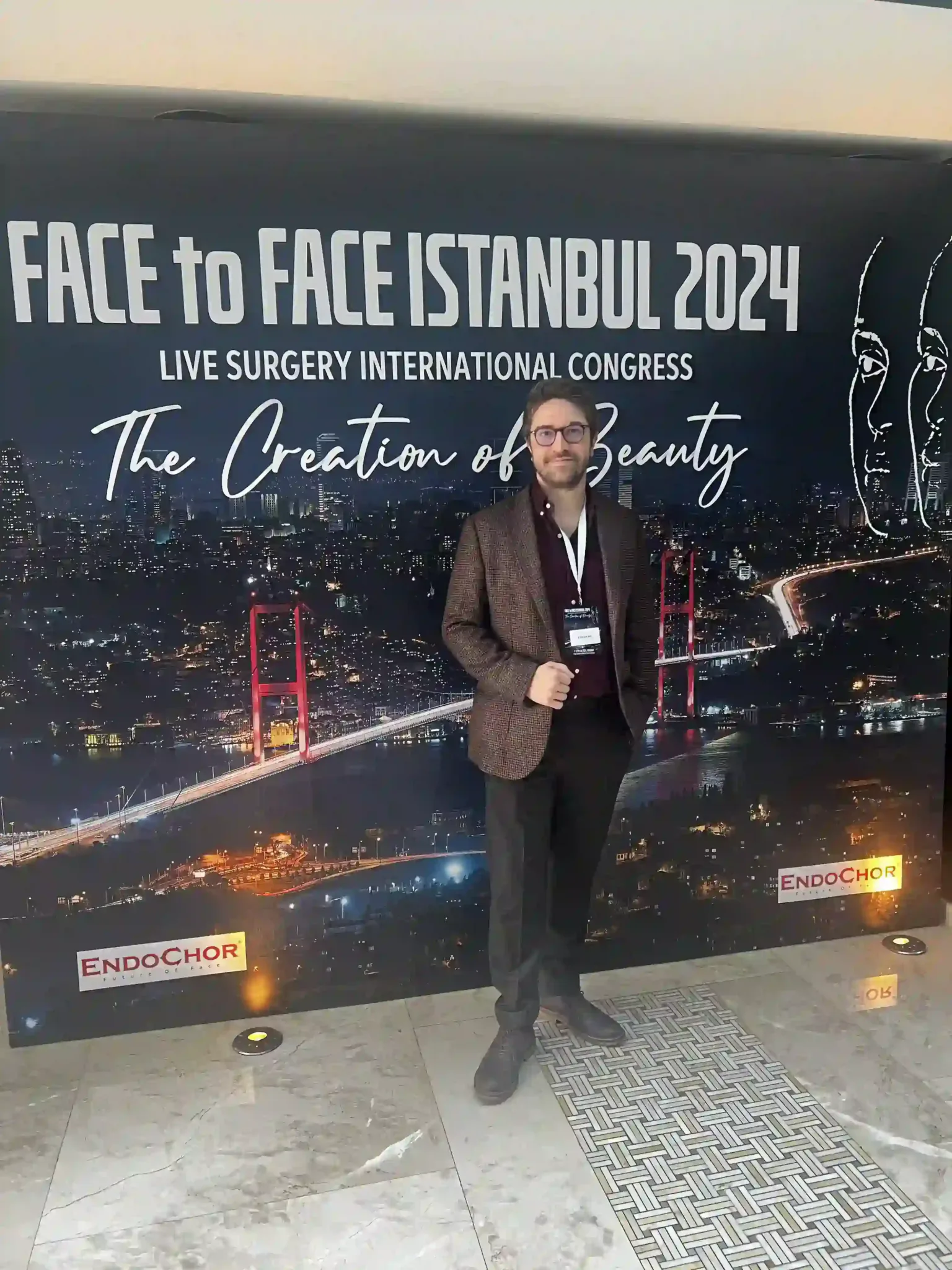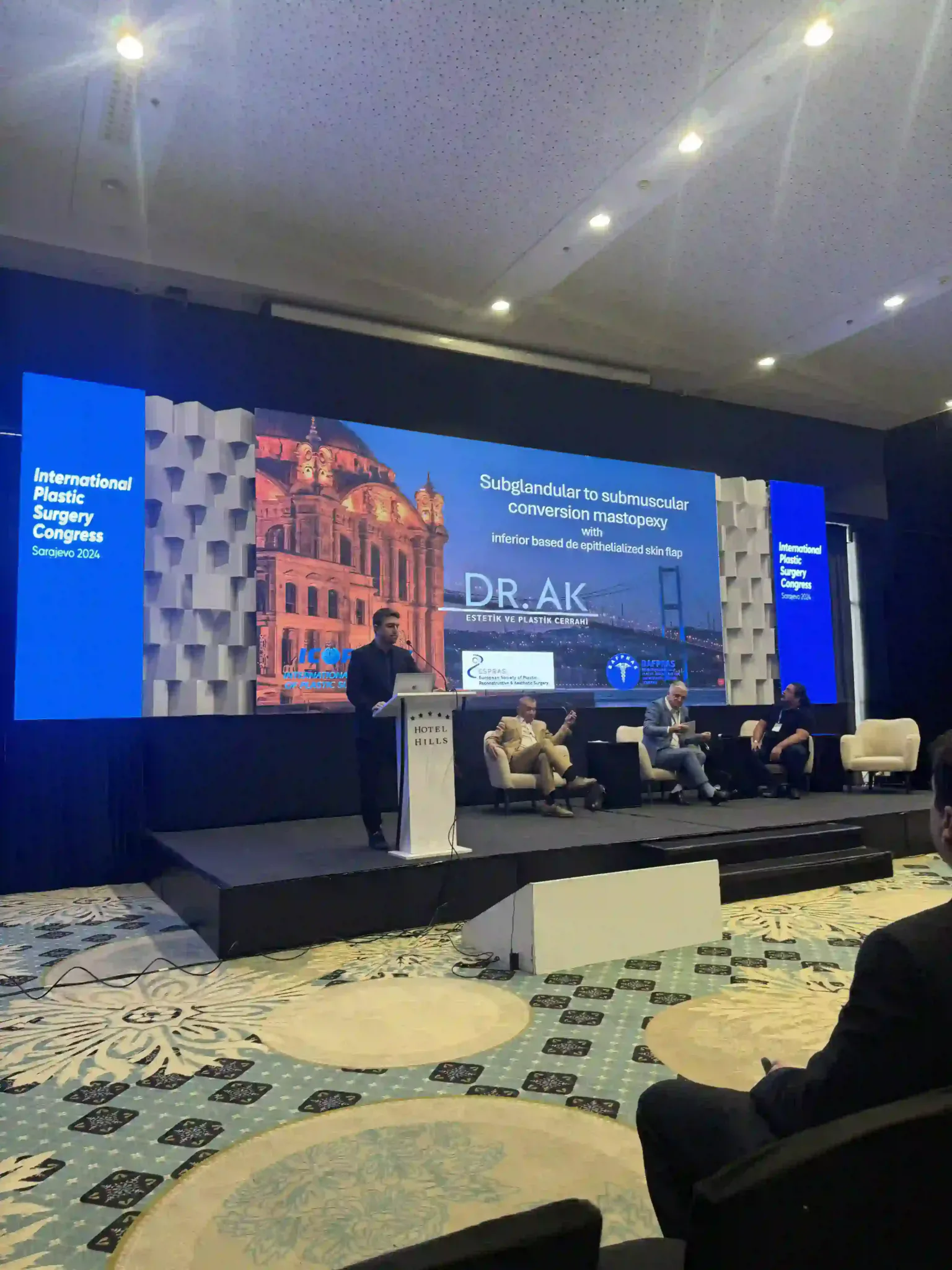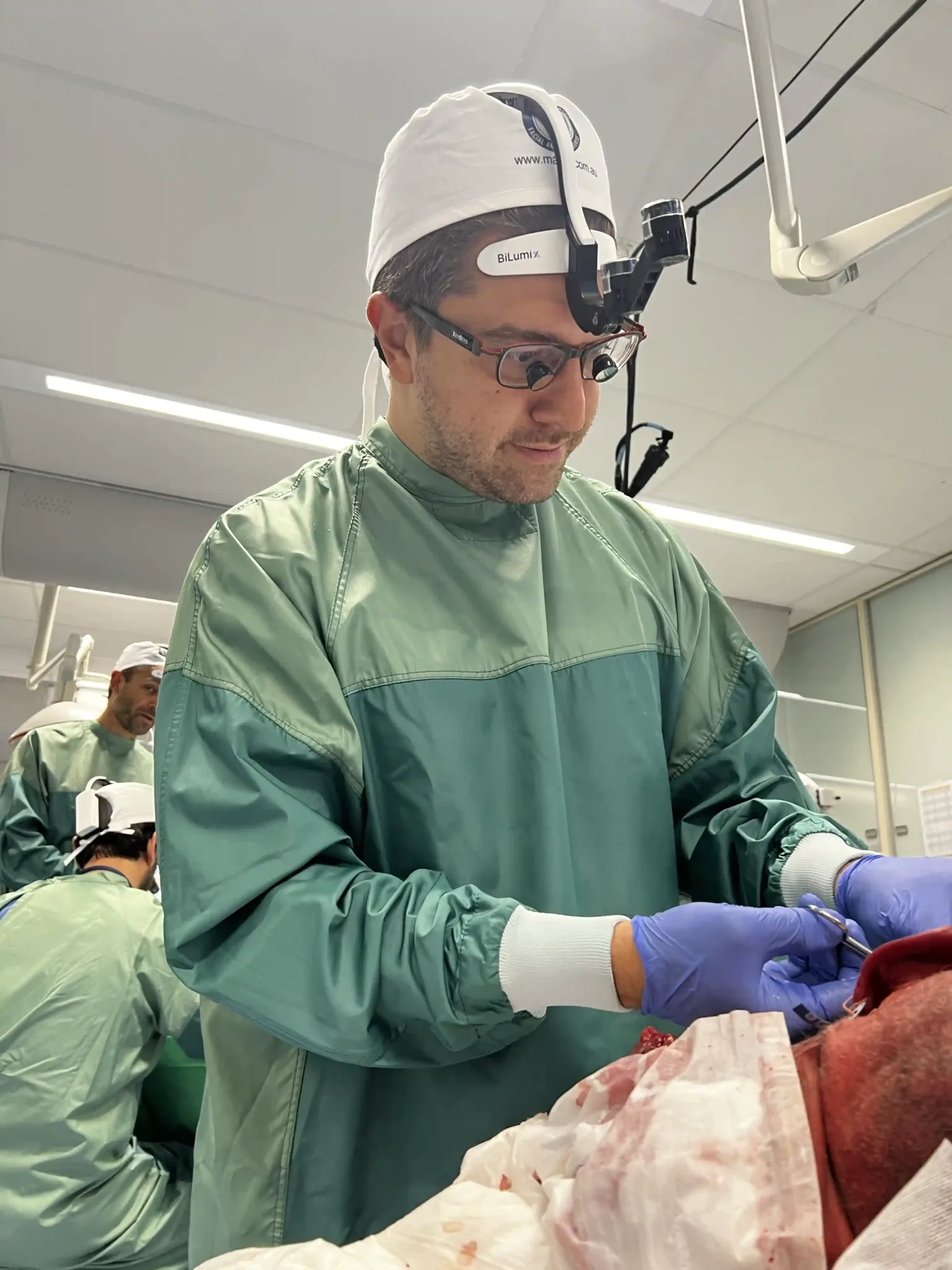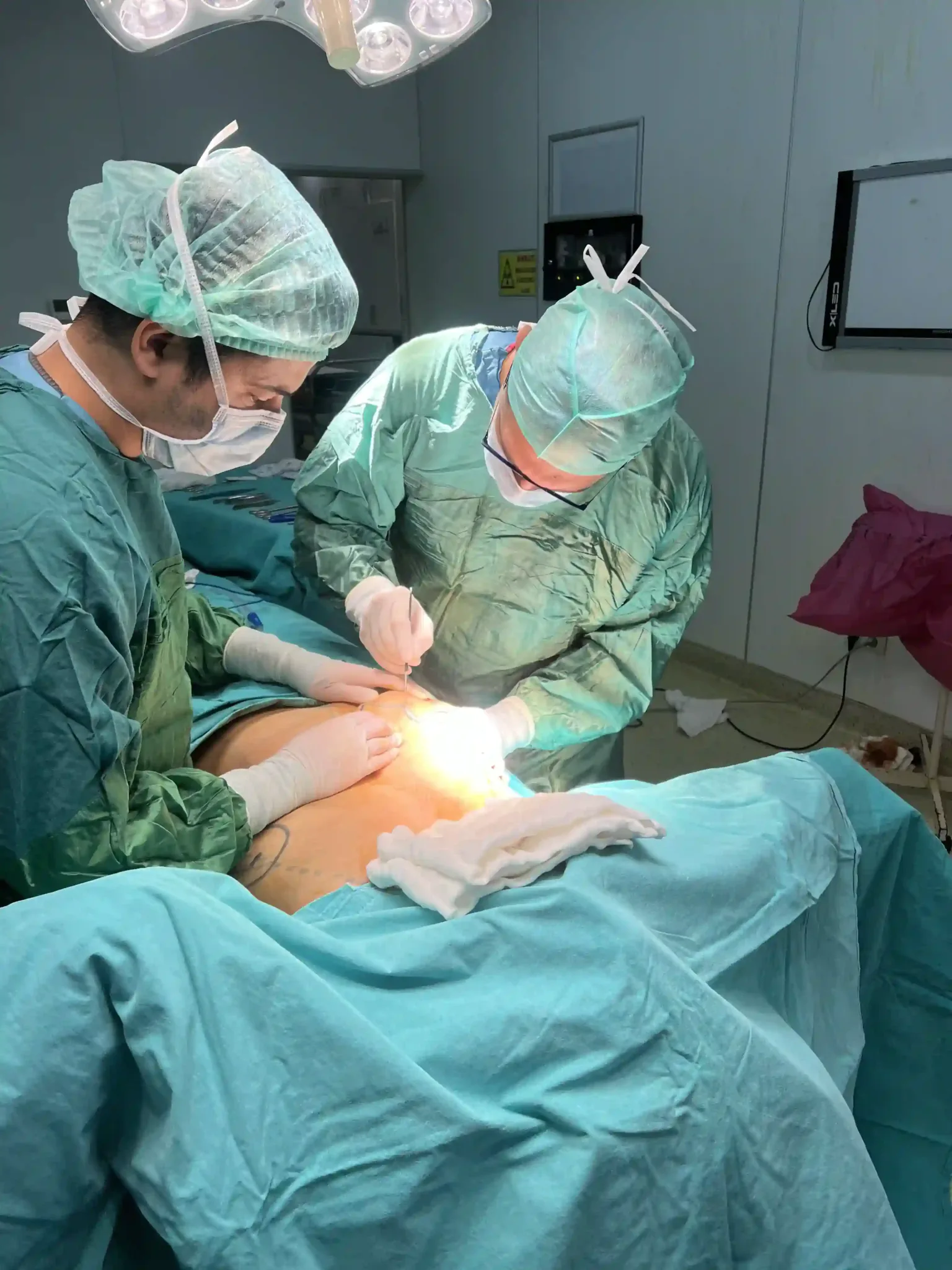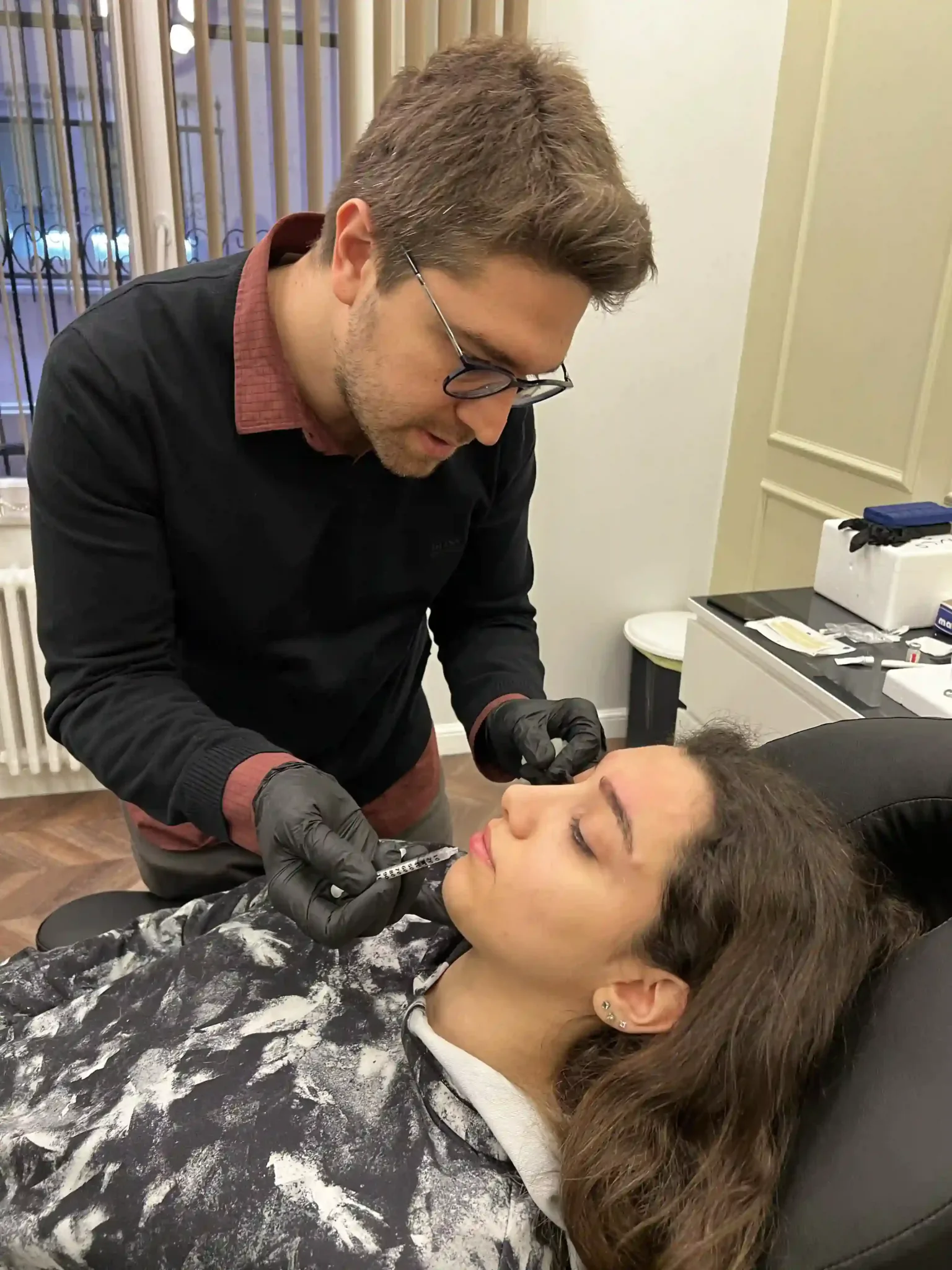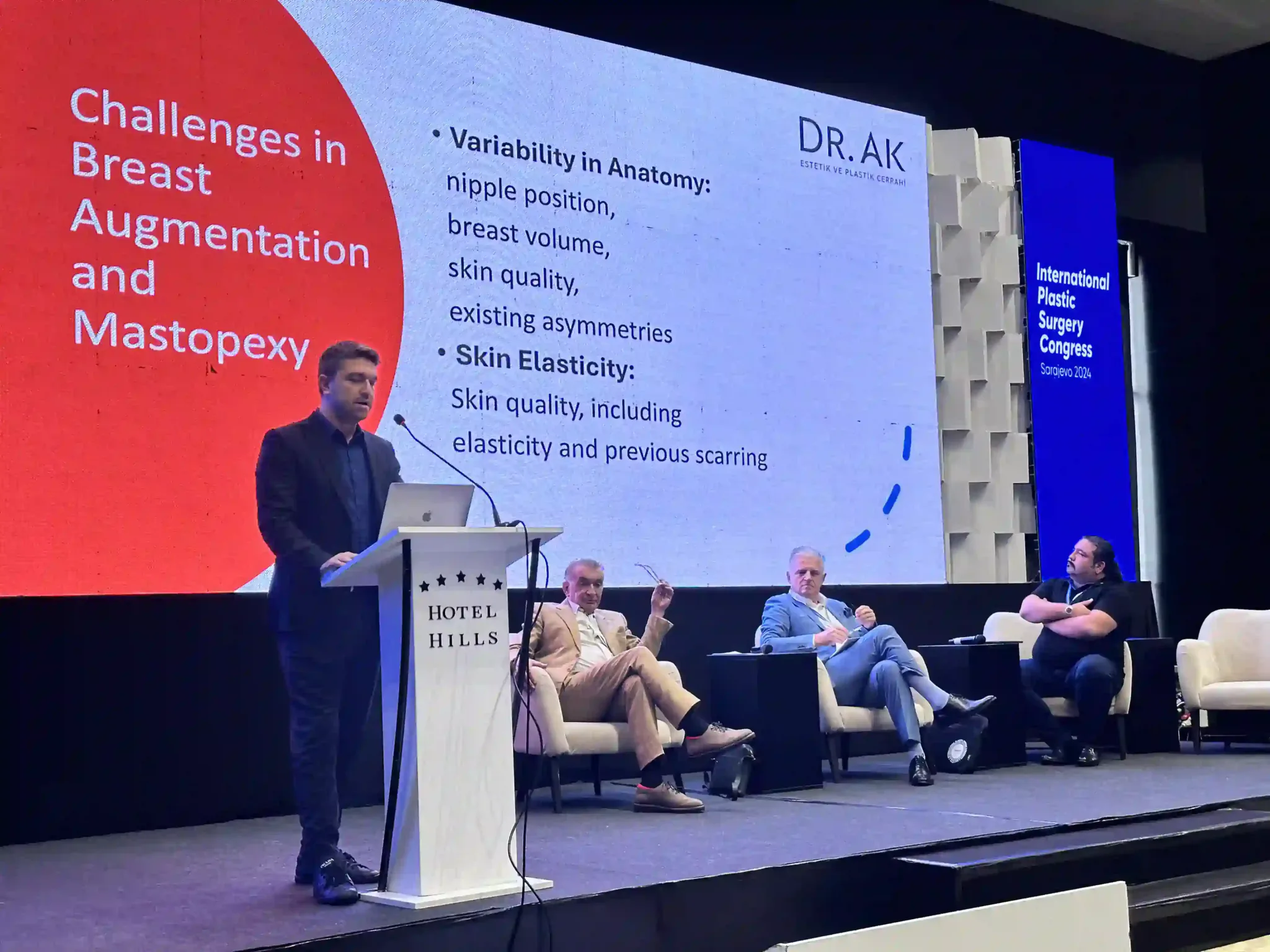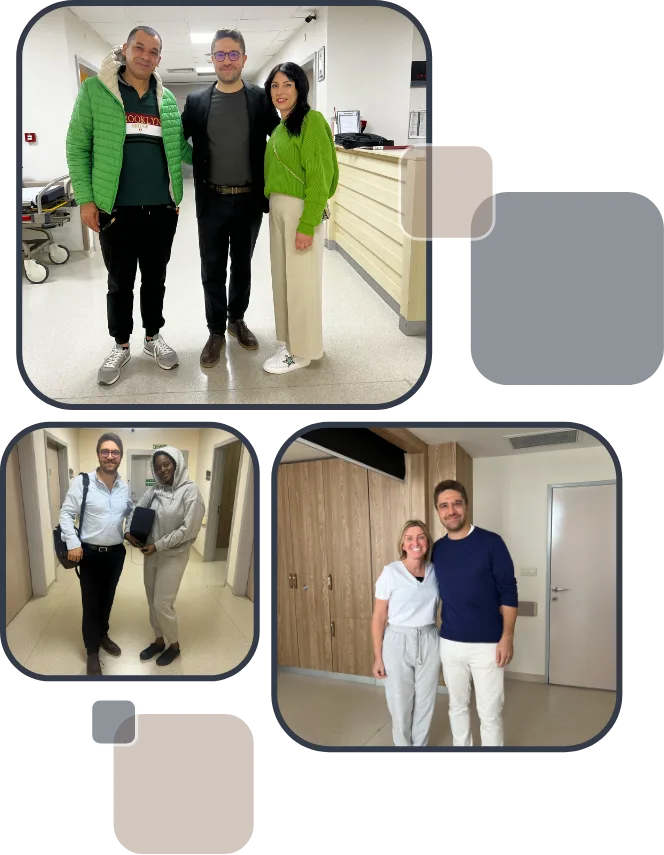Who is Not a Candidate for a Deep-Plane Facelift?
While a deep-plane facelift can yield effective results in facial aesthetics, it is not suitable for every patient. Contraindications are based on factors that may affect the patient’s overall health, complicate the healing process, or negatively influence surgical outcomes.
Absolute contraindications include serious medical conditions. Chronic ailments such as uncontrolled hypertension, diabetes, and cardiovascular diseases significantly increase surgical risks. Additionally, connective tissue disorders or immunodeficiency states, which adversely affect wound healing, make the procedure unfeasible. Patients with psychiatric conditions, particularly body dysmorphic disorder or unrealistic expectations, may not be satisfied with the surgery, complicating the procedure further.
Relative contraindications include smoking, a significant risk factor. Smoking negatively affects blood flow to subcutaneous tissues, leading to complications such as infection or tissue necrosis. Smokers are advised to quit smoking before the surgery. Also, patients taking blood-thinning medications should discontinue them at least one week prior to the operation to reduce bleeding risks.
How is a Deep-Plane Facelift Performed?
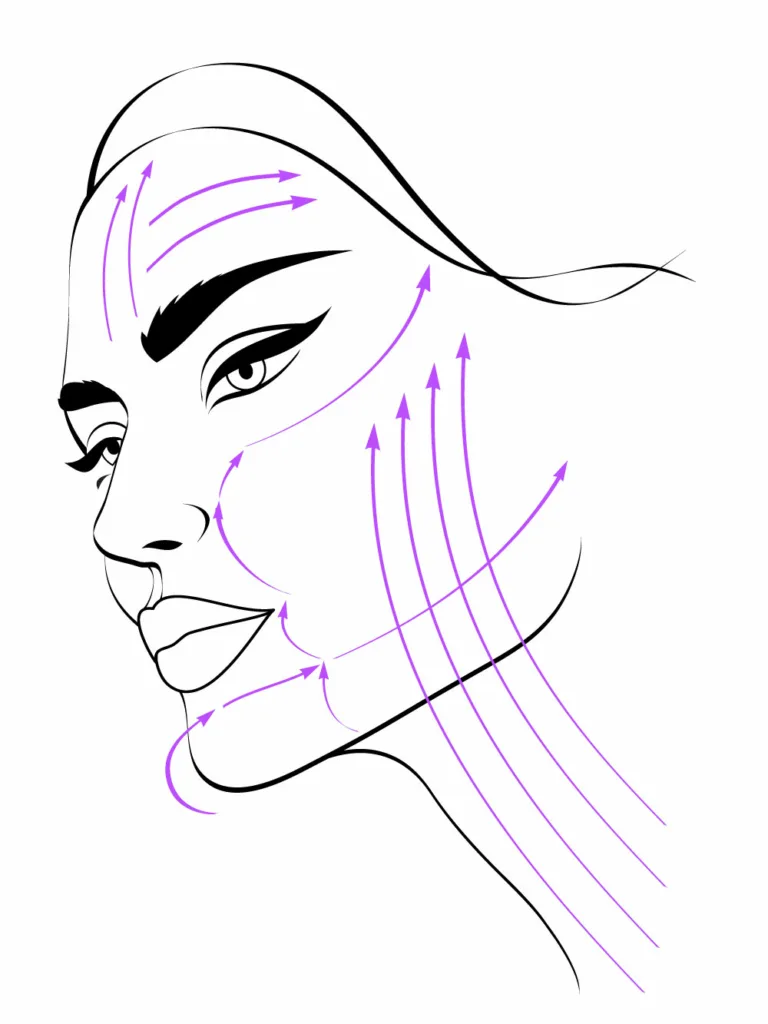
- deep plane facelift effect
The deep-plane facelift is one of the most advanced techniques in aesthetic surgery, aiming to restore a youthful and natural appearance by targeting the subdermal structures. The procedure is usually performed under general anesthesia, but depending on the patient’s health and the scope of the surgery, a combination of deep intravenous sedation and local anesthesia may also be chosen.
During the surgery, incisions are strategically placed, starting from the hairline, continuing down from the temples, passing in front of the ear, and extending behind the ear along the hairline. This careful placement ensures that scars are concealed within natural skin folds and hairlines. Through these incisions, the surgeon carefully lifts the skin layer to expose the deep tissue known as the superficial musculo-aponeurotic system (SMAS).
The SMAS layer is meticulously dissected and repositioned to correct the signs of aging in the face. This step is critical for softening nasolabial folds, defining the jawline, and lifting the mid-face area. Excess skin is carefully trimmed and reshaped without creating unnecessary tension.
Once the procedure is complete, sutures are placed with aesthetic precision, and drains may be inserted if necessary to prevent fluid accumulation. These drains are usually removed within one or two days. By preserving anatomical structures, a deep-plane facelift maintains the natural aesthetic integrity and youthful appearance of the face.
What Are the Side Effects of a Deep-Plane Facelift?
Although a deep-plane facelift provides effective results in aesthetic surgery, like any surgical procedure it carries some risks and side effects. The most common post-operative side effects include swelling, bruising, a feeling of tightness in the surgical area, and temporary numbness. These symptoms are usually mild and resolve spontaneously within a few weeks. In rare cases, serious complications such as hematoma formation may occur, requiring surgical intervention. Infections can be effectively treated with antibiotics.
Facial nerve damage is a significant risk associated with a deep-plane facelift. Such nerve injuries may cause temporary or permanent facial muscle weakness. However, current research indicates that these injuries generally resolve spontaneously and that the deep-plane approach presents similar nerve injury risks as other SMAS techniques. Additionally, in patients who smoke, more severe complications such as skin flap necrosis may occur, making it extremely important to quit smoking before surgery.
From an aesthetic standpoint, issues such as hypertrophic scar formation, hair loss at incision sites, and earlobe deformities may arise. These effects can largely be prevented with careful surgical technique. Choosing an experienced, specialist surgeon is crucial to achieving optimal results and minimizing complications. A thorough pre-operative briefing is essential before every procedure.
How Successful Is a Deep-Plane Facelift?
The deep-plane facelift is a highly effective surgical method associated with high patient satisfaction and long-lasting results. Scientific studies clearly demonstrate the reliability and efficacy of this technique. For instance, in a study by Kamer and Frankel involving 335 patients, 97% of the patients were satisfied with the results, and the rate of requiring a second revision procedure was only about 3.3%.
In more invasive SMAS techniques, this revision rate can rise to as high as 11.4%. Meta-analyses also support the safety profile of deep-plane facelift procedures; the rate of temporary facial nerve injury is only about 0.69%, which is similar to that of other facelift methods. All these findings indicate that the deep-plane facelift technique is both effective and safe, ensuring long-term patient satisfaction in facial rejuvenation surgery.
How to Prepare for a Deep-Plane Facelift?
Preparing for a deep-plane facelift requires careful planning to ensure both the surgery and the recovery processes proceed smoothly and effectively. This preparation process aims to achieve a successful outcome through collaboration between the surgeon and the patient. The most important steps to consider when preparing for the surgery are as follows:
Before the operation, a comprehensive assessment with the plastic surgeon is conducted to thoroughly examine the facial anatomy. During this consultation, the patient’s aesthetic expectations and medical history are reviewed. Physical examination evaluates skin quality, facial tissues, and problem areas. If necessary, advanced imaging methods are employed to optimize surgical planning. Additional tests by a primary care physician may also be required to assess overall health.
Medications that increase bleeding risk, such as aspirin, anti-inflammatory drugs, and herbal supplements, should be discontinued at least two weeks before the surgery. The surgeon may recommend special medications or topical products to support skin health and prepare the skin prior to the operation.
Smoking seriously impedes the healing process. Therefore, patients should stop smoking four to six weeks before surgery and remain smoke-free for at least four weeks afterward.
A balanced diet rich in fruits, vegetables, and high-quality proteins helps strengthen the immune system and supports healing. Adequate water intake prepares the body for surgery and speeds recovery.
Patients should arrange a support system for assistance with daily tasks during the recovery period. Taking sufficient time to rest after surgery reduces the risk of complications and promotes faster healing.
Adhering to the specific instructions provided by the surgeon increases the success of the operation. These instructions cover fasting periods, skincare routines, and hygiene measures. Completing all preparations prior to surgery ensures that the patient is both physically and psychologically ready for the procedure.
How to Care for Yourself After a Deep-Plane Facelift?
Careful postoperative care following a deep-plane facelift is critical both for achieving the desired aesthetic results and for ensuring a smooth healing process. The primary goals of postoperative care are to support tissue healing, prevent complications, and optimize aesthetic outcomes.
- Early Postoperative Care (1-7 Days):
Resting in the first few days helps reduce swelling and bruising. Postoperative head dressings are usually in place, and it is important to maintain these dressings according to the surgeon’s instructions. Elevating the head can help minimize swelling. Pain management involves taking the prescribed medications regularly. Hygiene is crucial for wound care; keeping the incision sites clean and dry reduces infection risk.
- Intermediate Postoperative Care (8-14 Days):
From the second week onward, most patients can return to light daily activities. However, heavy lifting, excessive bending, or strenuous exercise that could harm healing tissues should be avoided. Any numbness or tightness felt in the face during this period is normal and will subside with time. Controlled and gradually increased activity supports circulation and contributes to healing.
- Long-Term Postoperative Care (3-12 Weeks):
During this period, changes in facial contours become more pronounced. Most of the swelling subsides, and the natural facial contours emerge. Heavy physical activities may be reintroduced at this stage, but only as advised by the surgeon. You can also return to your usual skincare routine, taking care to avoid damaging the healing tissues.
Overall, a healthy diet, adequate fluid intake, avoiding smoking, and protecting your skin from sun exposure all help speed up the healing process. If any unexpected issues arise, you should contact your surgeon without delay. Regular follow-up appointments are essential for monitoring progress and detecting any potential complications early.
Why Dr. Erman Ak Is the Best Deep Plane Facelift Surgeon in Turkey?
Dr. Erman Ak is considered one of the best deep plane facelift surgeons in Turkey due to his extensive experience, specialized focus on facial aesthetics, and high patient satisfaction rates. With over a decade of surgical expertise, he combines advanced techniques with a modern approach, ensuring natural and long-lasting results. Patients frequently highlight his professionalism, meticulous care, and the supportive environment provided by his team. His international training background and contributions to plastic surgery further strengthen his reputation as a trusted name in deep plane facelift procedures.
How much does a Deep Plane Facelift cost in Turkey?
An average Deep Plane Facelift cost in Turkey is between 7,000€ to 7,500€.
All-Inclusive Deep Plane Facelift packages include;
- Hospital stay, 🏥
- 5-Star Hotel Stay🏨
- Transfers between the Airport, Hotel, and Hospital, 🚘
- Pre-surgery Tests & Consultations👨🔬🩸🩻
- PRIVATE Nurse during your Hospital recovery👩🏻⚕️
- Garments, Medication…📝
- And way More!!..🌟
Deep Plane Facelift: Cost in the USA and UK
Costs depend on the surgeon’s expertise, the clinic’s reputation, and the complexity of the case. In the United States, the average price ranges from $24,000 to $50,000, while in the United Kingdom, the cost is typically between £18,000 and £40,000. These fees usually cover the surgeon’s charges, anesthesia, and hospital care, but consultations, medical tests, and follow-up visits may be billed separately.
How Much Does a Deep Plane Facelift Cost in the USA?
In the USA, the Deep Plane Facelift is offered by leading facial plastic surgeons, particularly in major cities. Prices reflect the surgeon’s reputation, geographic location, and the extent of the surgery.
- New York: $26,000 – $50,000
- Los Angeles: $25,000 – $48,000
- Miami: $24,000 – $46,000
- Chicago: $24,500 – $47,000
The upper end of the range applies to renowned surgeons with extensive experience. These costs generally include the surgeon’s fee, anesthesia, and clinic facilities, but aftercare and recovery services may add to the overall expense.
How Much Does a Deep Plane Facelift Cost in the UK?
In the UK, the Deep Plane Facelift is primarily performed in private clinics, especially in London and other major cities. Prices vary depending on the surgeon’s expertise and the hospital chosen.
- London: £20,000 – £40,000
- Manchester: £18,000 – £37,000
- Birmingham: £19,000 – £38,000
- Edinburgh: £18,500 – £36,000
This procedure is not covered by the NHS as it is considered elective. Clinics typically provide a tailored quote after an initial consultation, and prestigious London surgeons may charge at the higher end of the scale.
Frequently Asked Questions
In which age group is a deep-plane facelift and neck lift most effective?
A deep-plane facelift and neck lift typically provide the most natural and long-lasting results for individuals between 40 and 60 years old with significant sagging and deep wrinkles. At younger ages, the need is usually more limited.
What is the difference between a deep-plane facelift and a traditional facelift?
In a traditional facelift, only the skin is tightened, whereas in the deep-plane technique, muscles and connective tissues are also corrected. This creates longer-lasting, more natural-looking results and delays the recurrence of sagging.
How long is the recovery period after a deep-plane neck lift?
Swelling and bruising usually decrease within 2–3 weeks. Patients can return to social life within 3–4 weeks, but full recovery may take several months.
How long do the results of a deep-plane facelift and neck lift last?
The results typically last around 10–15 years. Lifestyle, skin quality, and the natural aging process influence this duration. Smoking and excessive sun exposure can shorten the longevity of results.
Will there be scars after a deep-plane facelift and neck lift?
The incisions are hidden around the ears and in the hairline. During recovery, scars may appear slightly red but gradually fade and blend with the skin tone.
What complications can occur after a deep-plane facelift and neck lift?
Although rare, possible complications include infection, bleeding, nerve damage, or asymmetry. Choosing an experienced surgeon and following post-operative care significantly reduces these risks.
Does a deep-plane facelift and neck lift provide a natural appearance?
Since the tissues are corrected at deeper layers, facial expression is preserved. The outcome usually provides a younger, fresher, and more natural look rather than an artificial tightness.
Who is not suitable for a deep-plane facelift and neck lift?
This surgery is not recommended for individuals with serious chronic diseases, blood clotting disorders, or contraindications to general anesthesia. A thorough medical evaluation is essential.
Can other aesthetic procedures be combined with a deep-plane facelift?
Yes, eyelid surgery, fat grafting, or skin rejuvenation procedures can be combined with a deep-plane facelift to achieve a more balanced and comprehensive rejuvenation.
When can one resume sports after a deep-plane facelift and neck lift?
Heavy physical activities should be avoided for the first 3 weeks. Light exercise is usually possible after 4–6 weeks, but full sports activities require the surgeon’s approval.
References:
https://ohns.ucsf.edu/facialplastics/what-deep-plane-facelift
https://www.ncbi.nlm.nih.gov/books/NBK545277/




